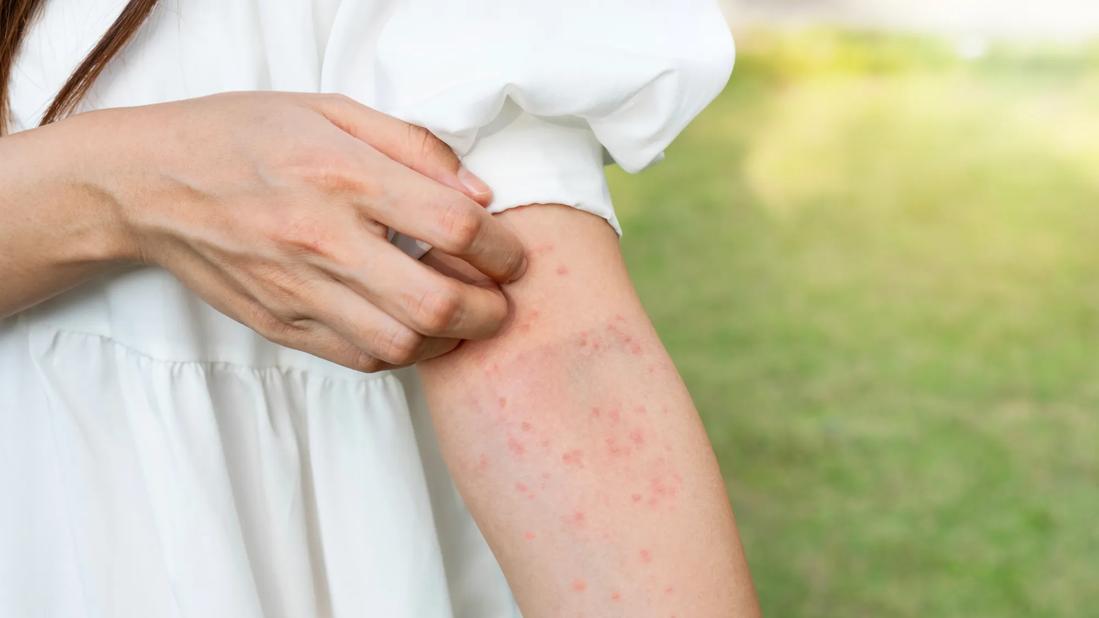Water, touch, sunlight, physical activity and cold are some of the rarest allergies

Figuring out what’s causing an allergy can be like solving a mystery. Sometimes, the culprit is just what you’d expect, like pollen, dust or your pet. In other cases, there’s a plot twist — and it’s something you’d never expect.
Advertisement
Cleveland Clinic is a non-profit academic medical center. Advertising on our site helps support our mission. We do not endorse non-Cleveland Clinic products or services. Policy
Allergist DeVon Preston, MD, shares the rarest allergies he sees and how he helps people manage them.
An allergy happens when your immune system overreacts to something you’re exposed to. Allergy triggers vary widely. “We’re not sure why some allergies occur more often than others, but most are quite treatable,” says Dr. Preston.
Up to 25% of people have seasonal allergies and 6% have a food allergy, reports the U.S. Centers for Disease Control and Prevention (CDC). Other allergies affect only a small fraction of the population.
Many rare allergies are caused by something touching your skin. Upon contact, immune cells in your skin (mast cells) release a chemical called histamine. This reaction causes raised, red and itchy hives (urticaria).
You might also experience more widespread symptoms and anaphylaxis, which can be life-threatening. Signs you should seek emergency care include:
Some of the most unusual allergies include:
Your body is up to 60% water. So, how can you be allergic to it? Experts aren’t sure but they think there’s something in the water that interacts with your skin.
Advertisement
“Aquagenic urticaria is extremely rare, with fewer than 100 cases reported,” shares Dr. Preston. “It seems to occur regardless of water temperature or source. Freshwater, saltwater, sweat and tears are all triggers.”
The hives in aquagenic urticaria are typically short-lived. They appear 20 to 30 minutes after contact with water and usually go away after about an hour. The main treatment is an antihistamine taken daily to block the release of histamine.
Other treatments include:
Dermatographia and vibratory urticaria are two types of touch-related allergies. In dermatographia, you develop hives or raised areas after scratching, rubbing or putting pressure on your skin.
Vibratory urticaria causes hives, swelling and redness after strong vibrations to your skin. Common triggers include a bumpy bus ride or using power tools, such as a jackhammer. If vibrations are intense, vibratory urticaria may include other symptoms, like:
“In these allergic reactions, we think that pressure on the skin causes immune cells to burst, releasing histamine,” says Dr. Preston. “Antihistamines are the most common treatment for both conditions.”
Many people love a sunny day. But if you’re allergic to sunlight, being outside can be painful and even dangerous. Sunlight can cause a range of skin reactions — some are allergy-based, while others have different causes. Two examples include:
Solar urticaria is a traditional allergy. Exposure to sunlight causes your skin’s immune cells to spill histamine, causing hives on sun-exposed skin. Some people even develop symptoms on areas covered by thin clothing that doesn’t fully block the rays.
The best treatment for solar urticaria is to prevent it. Avoid sunlight or wear sunscreen and UV-blocking clothing when outside.
Phototherapy is another treatment option to help build up a tolerance to sunlight. You can also take antihistamines before going outdoors or as a treatment if you develop symptoms.
A photoallergic reaction is when sunlight interacts with the chemicals in something you put on your skin, like lotions or sunscreens. The reaction makes a new chemical that produces an immune response. This response causes more serious symptoms than solar urticaria, such as:
Treatment includes steroids you take by mouth or apply to your skin to reduce inflammation. In severe cases, you may need treatment in the burn unit of a hospital.
Advertisement
“Identifying which lotions or sunscreens you react to is essential so you can avoid them,” notes Dr. Preston. “We also recommend wearing UV-blocking clothing while outdoors to eliminate the need for sunscreen.”
Exercise, a hot shower or a summer day can cause an allergic reaction called cholinergic urticaria. Heat stimulates the release of histamine from immune cells, causing hives and itching. Antihistamines are the main strategy to prevent or treat symptoms.
Exercise-induced anaphylaxis is a rare allergic reaction that happens when you exercise.
“It’s similar to cholinergic urticaria because it’s related to body temperature and causes hives and itching,” clarifies Dr. Preston. “The main difference is that exercise-induced anaphylaxis occurs specifically with exercise, while cholinergic urticaria can happen any time you sweat.”
And as the term “anaphylaxis” suggests, the exercise-induced allergy can be life-threatening.
There are two versions of exercise-induced anaphylaxis:
Advertisement
Preventive treatment with antihistamines before exercise can ward off symptoms. Some people also carry an epinephrine auto-injector (such as EpiPen® or AUVI-Q®) in the event of a severe reaction.
Cold urticaria causes hives after exposure to cold temperatures, foods or beverages. In some cases, such as swimming in cold water, anaphylaxis can occur.
“It’s important for people with this condition to avoid the cold or take antihistamines to prevent a reaction,” stresses Dr. Preston.
One of the most unusual allergies is alpha-gal syndrome. This is an allergy to meat caused by tick bites, usually from the lone star tick. The tick’s saliva contains a protein called alpha-gal, which triggers an immune response.
Alpha-gal is also found in mammal-based foods, like meat, dairy products and even gel capsules. When you eat these products, your immune system reacts, causing symptoms such as:
“Diagnosing alpha-gal syndrome can be tricky, as it’s one of the only food allergies that has a delayed response,” says Dr. Preston. “It may take up to six hours to kick in, making it difficult to link the exposure and symptoms.”
Advertisement
To treat alpha-gal syndrome, avoid products that contain alpha-gal. If you don’t get more tick bites, this allergy usually gets better over time.
Knowing you have an allergy isn’t always obvious. One clue is that allergic reactions usually happen every time you’re exposed to something.
If you get hives or rashes, Dr. Preston recommends tracking your symptoms and documenting them with photos. Take note of what you were exposed to before your symptoms started and when they started. If you notice a pattern, it’s time to talk to a provider or allergist.
If you do have an allergy — even an uncommon one — your provider can help you figure out the issue. They’ll also help you develop a plan for preventing symptoms, whenever possible, and treating them when they occur.
Learn more about our editorial process.
Advertisement

Drowsiness is a side effect of inflammation, disrupted sleep and, sometimes, your allergy medicine

If you’re sensitive to aspirin or other salicylates, limiting exposure is the best remedy

Mold exposure can cause allergic reactions, asthma and skin rashes

If allergies have you coughing and sniffling all night, try showering before bed, keeping the windows closed and propping your head up

If allergies make your mornings a slog, consider closing the windows and showering at night

When the trees start to bloom, your allergies can come to life — medications, closing the windows and keeping clean can help

Autumn allergens typically begin to bloom — and release their pesky pollen — around August

Babies can get congested easily, but you can calm their cough by keeping them hydrated, using nasal drops and running a humidifier

Weight loss may cause loose, sagging skin and muscle loss to your rear

Several conditions, like vitiligo and fungal infection, can cause a loss of pigmentation, leading to white spots or patches on your skin